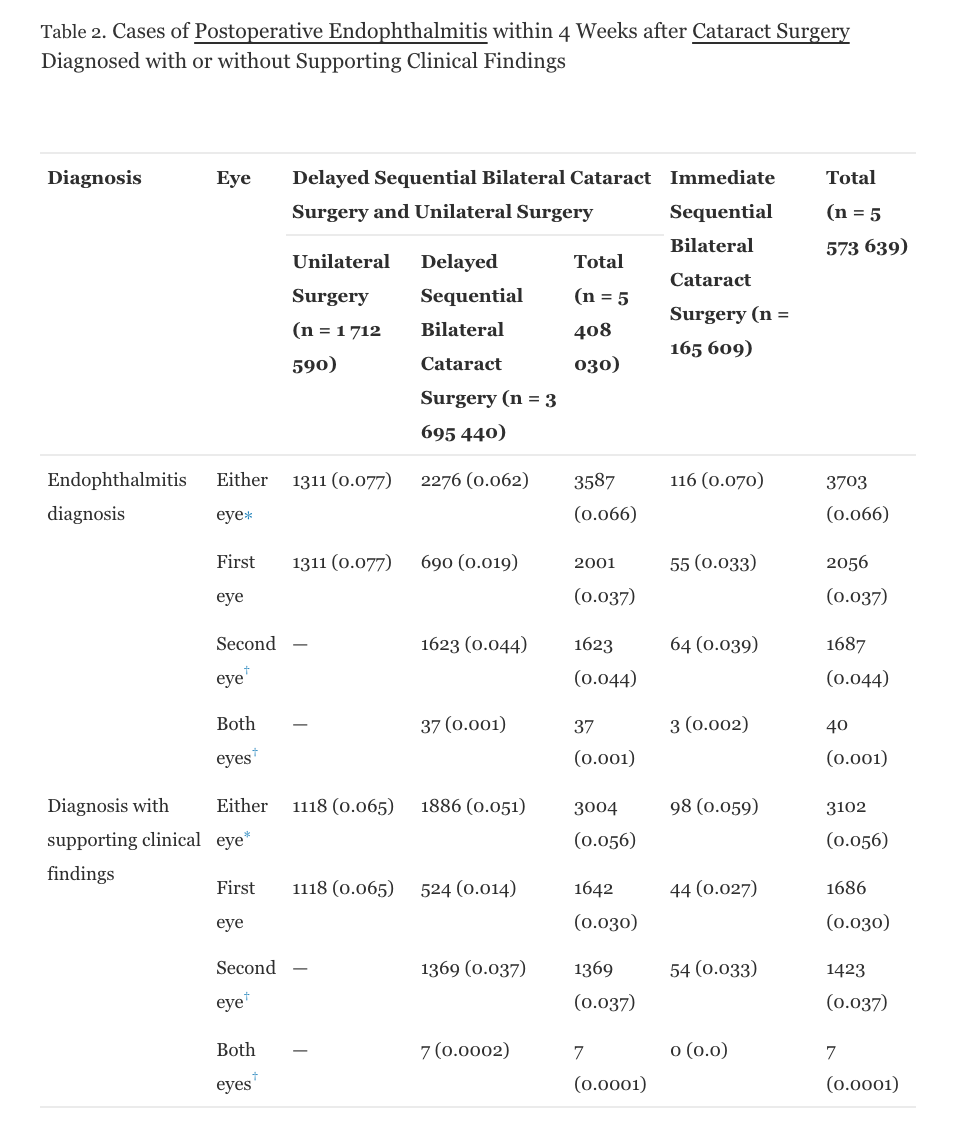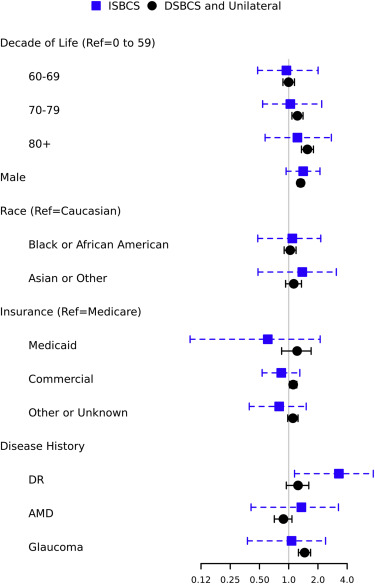This large retrospective cohort study used data from more than 5 million people who underwent bilateral cataract surgery in the United States to investigate the rate of post-operative endophthalmitis. The authors compared the rates of endophthalmitis in the group of patients who had both eye surgeries on the same day (immediate sequential bilateral cataract surgery, or ISBCS) to the group of patients who either had cataract surgery in both eyes on separate days (delayed sequential bilateral cataract surgery) or who just had surgery in one eye. The authors found that after controlling for age, sex, race, insurance status, and comorbid eye diseases, the risk of postoperative endophthalmitis was not statistically significantly different between these two groups, .
The authors found that bilateral endophthalmitis was extremely rare in general. There were only 7 cases of bilateral postoperative endophthalmitis identified in the study, which were confirmed by clinical review of the electronic medical records. All seven cases occurred in the group who had their surgeries on separate days. Only five cases of bilateral endophthalmitis after same day surgery (ISBCS) have ever been reported in the literature, and four of these cases were believed to be the result of a breach in the aseptic protocol between procedures. In this study, using data from the Intelligent Research in Sight (IRIS) Registry, the authors were able to analyze data from 3.5 times more same day surgery (ISBCS) patients than previous similar studies. But based on the rate of unilateral endophthalmitis that was detected in the ISBCS group (0.070%) and assuming that endophthalmitis risk is independent between the 2 eyes, the authors would have needed roughly 2 million patients (more than 10 times the number of patients included ) before they would have expected to see any bilateral endophthalmitis in the same day surgery group.

— = not applicable. Data are presented as no. (%).
∗Patients demonstrated postoperative endophthalmitis in either the first or second surgery eye, or both.
†Percentages taken from the number of participants who underwent bilateral cataract surgery (n = 3 695 440, n = 165 609, and n = 3 861 049).
The authors note that surgery center–related confounders may have a greater influence than surgical timing on the rates of endophthalmitis. As ISBCS increases in popularity, even larger amounts of data will be valuable to confirm these findings. But for now, these results suggest that the risk of postoperative endophthalmitis is similarly low for same day and delayed sequential bilateral cataract surgery.
Lacy M, Kung TPH, Owen JP, Yanigihara RT, Blazes M, Pershing S, Hyman LG, Van Gelder RN, Lee AY, Lee CS, IRIS® Registry Analytic Center Consortium. Endophthalmitis Rate in Immediately Sequential versus Delayed Sequential Bilateral Cataract Surgery within the Intelligent Research in Sight (IRIS) Registry Data. July 2021. doi.org/10.1016/j.ophtha.2021.07.008

